Birthday: November 15, 1923
Birthplace: Watertown, Wisconsin
Family: Minna and George Lehmann
Occupation: Engineer Bridge Builder
Branch: Navy
Unit: 60th Naval Construction Battalion, Seabees
Post: Salvage Diver and Damage Repair
Rank: Chief Petty Officer

Currency George was paid in New Guinea.

George Lehmann

George Lehmann

George Lehmann

George Lehmann

George Lehmann
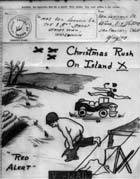
George Lehmann
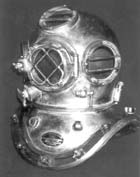
George Lehmann
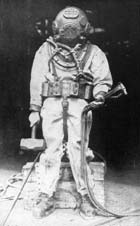
George Lehmann
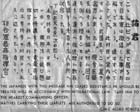
Leaflet encouraging Japanese soldiers to surrender
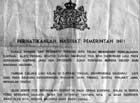
Leaflet encouraging Japanese soldiers to surrender
In December 1941, with an eye on the developing storm clouds across both oceans, Rear Admiral Ben Moreell, Chief of the Navy's Bureau of Yards and Docks, recommended establishing Naval Construction Battalions. With the attack of Pearl Harbor and the U.S. entrance into the war, he was given the go-ahead. Lehmann was in the 60th Naval Construction Battalion.
More than 325,000 men served with the Seabees in WWII, fighting and not building on six continents and more than 300 islands. In the Pacific, where most of the construction work was needed, the Seabees landed soon after the Marines and built major airstrips, bridges, roads, warehouses, hospitals, gasoline storage tanks and housing. Lehmann was in the Seabees.
George Lehmann was a sailor in the 60th Naval Construction Battalion. He spent the war in the South Pacific near New Guinea. He helped build airfields, warehouses, and clear coral for ships to pass through.
"I went down to the recruiting office for the Seabees and was accepted immediately, so I went from the army to the navy. I spent the war in the Navy in the South Pacific. The Seabees were more of a special organization. The average age was thirty-five years old in our unit. We were one of the first battalions. We were born because of overseas construction in all the islands. I was sent to Rhode Island for training. We had six to seven weeks of rough combat training because we had to defend ourselves if we had to protect ourselves. Fortunately we didn't get too much involved in action.
I took a liking to a notice for diving, a deep sea diving school. So I took a chance with eight others. We were accepted and taken to the Boston Diving School. We went through training for six weeks without touching any diving equipment. We had training in mathematics, physics, and the human body.
I was than assigned to the 60th Naval Seabee and sent to California. We had one to two weeks training and then we went off to Port Hueneme, the Seabees main base. We stayed there for two to three days and than reported to the troop ship President Monroe. I never want to see it again. We spent thirty-one days on that tub. I never saw beans in so many different forms. I made up my mind right than and there that I was going to be a Chief Petty Officer, if took me eight years.
The first place we stopped was Johnson Island. We went to Tulage (Solomon Islands) to drop off Marines, and then to Espirito Santos. After that we went to Brisbane, Australia were we hit extremely rough water. Then we went to a naval base for more training and built some warehouses. After that we loaded an LST and headed for an island and chased the Japanese off the island. Next we headed for Port Moresby, New Guinea.
Now we went to our first job, which was to survey the area of Woodlark Island. I went there with about eight others because they needed an airbase so they could bomb the Japs. We were there two days and didn't know if Japs were on the island. It turned out they were on the other side. One of the other men saw a transport out at sea and we thought great, the eight of us vs. the entire Japanese Army. Well it turned out to be U.S. Marines. We had fun with them asking them what took them so long to get here.
Two days later we set a record, which still stands, for building an airfield in thirteen days. On the airfield, there was anything you wanted, but the boys wanted a chapel. The top commander of the Seabees said `no way'. Well the guy up stairs runs the show and that night we had a bombing raid. The next day work was begun on that chapel.
The job I had was making channels for the ship to come in through. We blasted channels in the reefs and ended up with all different types of fish. The Japs blockaded the island for three weeks, but we had plenty of fish to eat. After that, we went to Finschhafen. At night everything quit. The jungle got quiet and if you broke the silence, you were probably shot. We then landed at Langemak Bay around two in the morning. The only thing you could see was the Japs rifle fire. We built another airfield in about three weeks there. We also had to bury the Japs that had been killed by the Marines that came ahead of us. The odor was terrific.
After that, we went to Hullandia where I did carpenter work. We built General McArthur's home in New Guinea, which had modern plumbing in it. Then we went to Biak Island where I did more water demolition and built another airfield. We lost more people in the typhoon on the island, then we did in combat on Biak Island. I became ill there and spent two weeks in the hospital in the Philippines. After that I was sent to the Great Lakes Hospital aboard a hospital ship. While aboard ship, I saw men from the invasion of Iwo Jima and I said to myself `they need these beds more than I do.'
Before being discharged, I played baseball with the Great Lakes team and played in two games against the Cubs and the Phillies. I was medically discharged in July 1945."
under Learn and Serve American Grant #00LSFWI104
